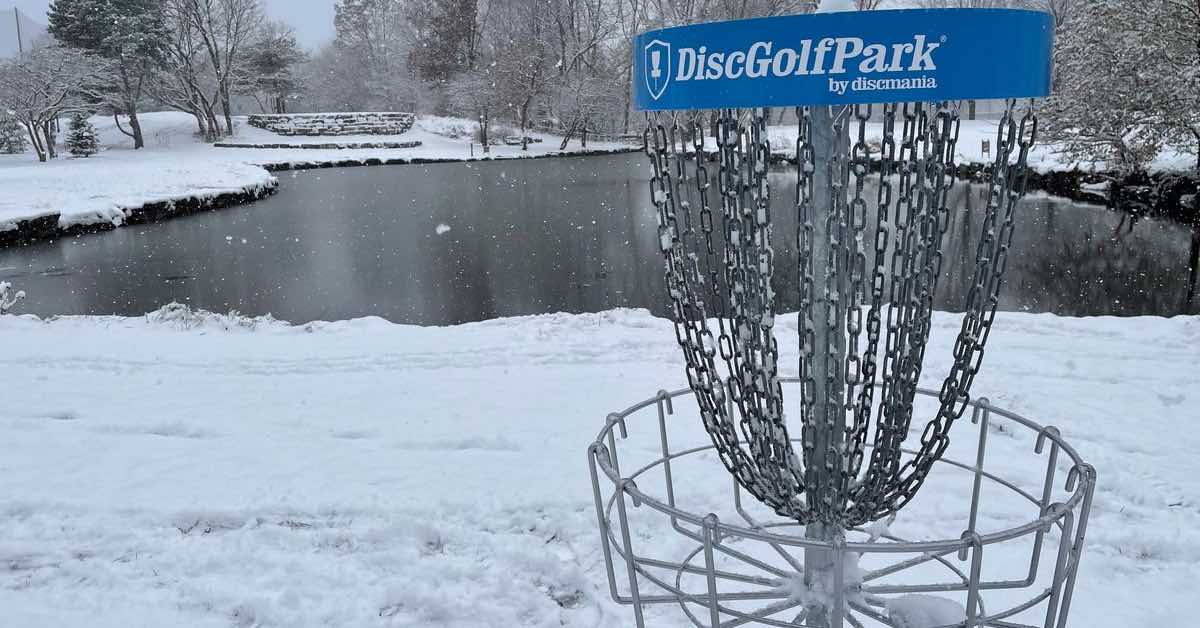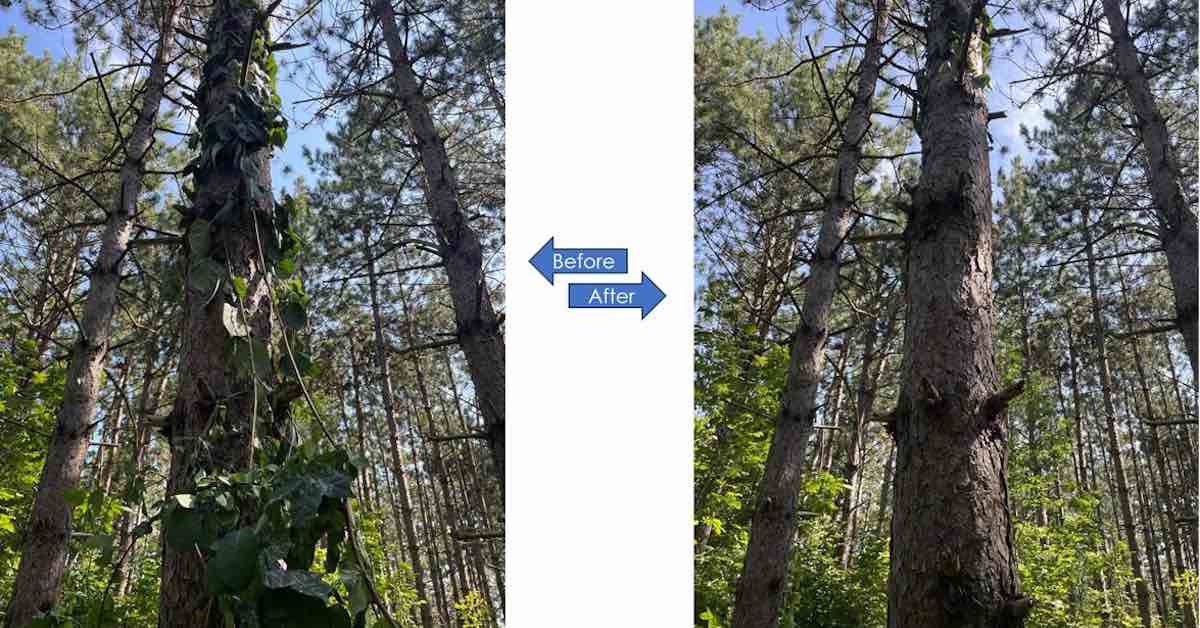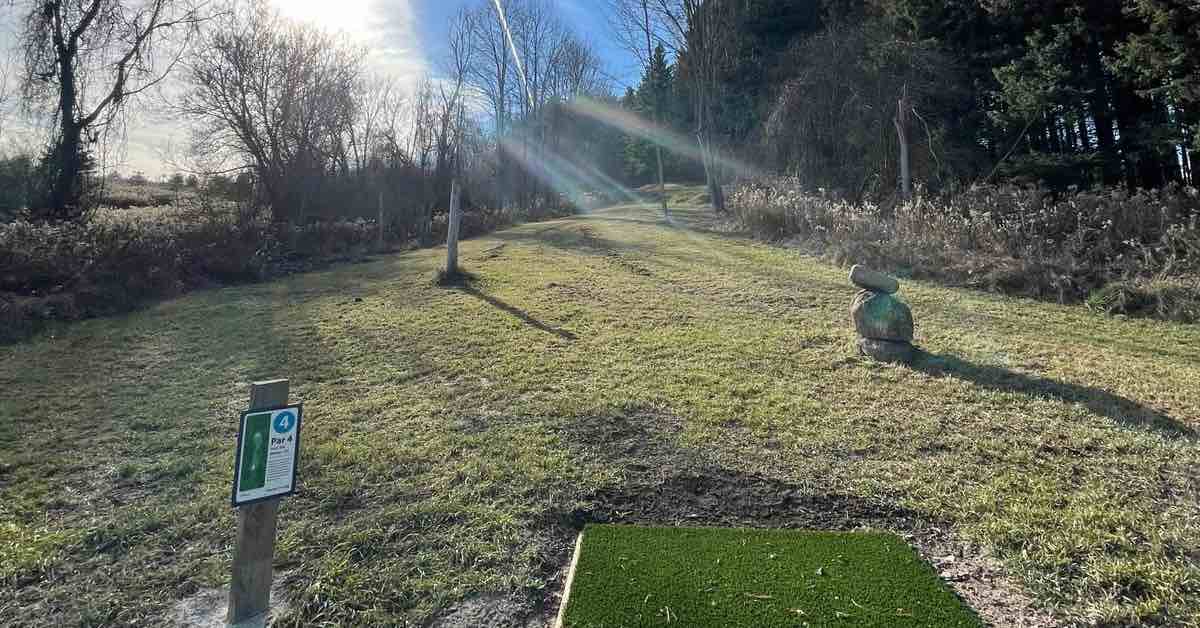Disc golf + Toronto & Region Conservation Authority: A slow burn love story
By Alex Williamson
The Toronto & Region Conservation Authority (TRCA) had the first inkling that its relationship with disc golf could turn into something serious in 2020. That was when TRCA higher-ups got to see Toronto’s public Scarlett Woods Golf Course transformed into Scarlett Woods Disc Golf Course for the winter.
“Three years ago, approximately, we had a discussion with a manager at the city of Toronto who knew our director quite well and mentioned he was building disc golf in the city,” recalled Joe Petta, a Senior Manager of Conservation Parks at TRCA. “He invited us out to Scarlett Woods, and we went out for the day.”
Petta was impressed with how disc golf added a new dimension to the golf course while maintaining its core purpose to facilitate recreational outdoor sport. It was also striking that even during the cold of a Toronto winter, there were plenty of visitors.
“It was amazing to see how many people were coming out the day we were there,” Petta said. “We talked to a couple of people about how long they’d been playing and how passionate they were. Some people were coming out every single day.”

The designers of Scarlett Woods’ seasonal disc golf course, Cara Hovius and Jeff MacKeigan, conducted the tour Petta enjoyed. Both Hovius and MacKeigan left corporate life behind in 2019 to focus on growing disc golf. Their enterprise, ChainLink Disc Golf, has helped create disc golf courses and organize events in and around Toronto ever since.
After the tour, talks between the TRCA and ChainLink about bringing disc golf to large, TRCA-managed properties in the Toronto region began. Talks turned into planning and constructing disc golf facilities at two sites: Albion Hills and Bruce’s Mill Conservation Parks.
Assuring that those courses reflected TRCA’s mandate to protect local ecosystems was a big task that required substantial amounts of patience, learning, and time. Below we explore what it takes to create disc golf courses with conservation ethics at their core as well as why TRCA and ChainLink hope to continue collaborating.
Balancing Great Disc Golf with Great Conservation
Ian Boyd, another Senior Manager of Conservation Parks who worked with ChainLink at Albion Hills, said that though the TRCA has many functions, most people connect them to outdoor recreation areas.
“We’re a conservation authority, so a big arm of what we do is regulatory,” said Boyd. “But the conservation parks front is very much the public-facing part of our work.”
Those parks also support a pillar of the TRCA’s strategic plan through 2034, which is to promote community prosperity through, in part, “connect[ing] communities to nature and greenspace.” The more attractive the TRCA makes parks, the likelier people are to visit them and connect with the outdoors. However, offerings on TRCA land need to conform to aspects of their other pillars, such as “protecting the natural environment.”
A tee at Albion Hills Disc Golf Course at Albion Hills Conservation Park. Photo uploaded to UDisc Courses by Jeff MacKeigan.
“There’s a a synergy between disc golf and that premise – getting people out in a way that’s not detrimental to the natural environment, in a way that seamlessly works with it,” Boyd said.
Still, creating courses that met the TRCA’s rigorous standards wasn’t as simple as an install at a typical public park. Finalizing plans that all stakeholders approved and the eventual installation of the TRCA courses took over 2.5 years. During the process, Hovius and MacKeigan learned from various experts in conservation and property management fields.
“We’ve worked with ecology, archaeology, ornithology, the operations team, and their operations maintenance team,” MacKeigan said. “We learned how to consider things like creating a fairway so they could cut grass without impacting trees while reinforcing the protection of butterfly habitat.”
Hovius said the experience has made them adept at designing courses whose construction restores areas to more natural states.

“We’re able to identify invasive species and go about properly removing those invasive species,” Hovius said. “It’s amazing. There are times where you go through a piece of land and when you remove the invasive species, it totally changes the look and might totally change where you place your hole. So rather than removing a perfectly good tree, you have the opportunity to remove invasives that might otherwise choke out the native plants.”
MacKeigan added that they sometimes altered fairways significantly to target invasive species.
As carefully and conscientiously as ChainLink planned, accommodating everyone’s concerns at each property was a long process. The pair’s patience, perseverance, and flexibility earned respect and trust from the TRCA.”
Jeff and Cara were really good about redrawing the map repeatedly,” Boyd said. “I think we did 10 or 11 different versions of [Albion Hills] before we got the okay from our internal groups and the province.”
Pairing Disc Golf with Place
Along with creating environmentally sustainable courses, ChainLink assured that the new disc golf facilities complemented existing offerings at the two TRCA properties as well as nearby disc golf courses.
“One of the first things we did was find the property on UDisc and then zoom out,” MacKeigan said, referring to the UDisc Courses map that shows the locations of over 14,000 disc golf courses worldwide. “We’d look and say, ‘What’s the closest course? Let’s design a course that’s not the same as that course.'”
The goal was to offer something new in each area, both to bolster local disc golf infrastructure and attract players to the TRCA properties.
In the case of Bruce’s Mill – which Petta said has over 200,000 visitors a year – there was no nearby course, so a beginner-friendly, nine-hole track was a no-brainer.
A sign at the beginner-friendly, nine-hole Bruce’s Mill Disc Golf Course tells the many new players who see it simply, “Welcome to Disc Golf.” Photo uploaded to UDisc Courses by redrabit.
“It’s the first course in a wide radius, and the park itself is geared toward families,” MacKeigan explained. “We said, ‘This is going to be the first disc golf experience for a lot of people, so it makes no sense to build something big.'”
Bruce’s Mill Disc Golf Course opened in June 2023 and has already been used by school groups and many other park visitors.
Albion Hills is a very different property. It’s an enormous park that covers about 580 hectares (over 1,400 acres) and is popular for extreme mountain biking and overnight camping. There are already beginner and intermediate disc golf courses nearby. All signs suggested that going for a very challenging 18-hole at Albion was the right move.
“It’s the course you graduate to from all the other courses in the area,” MacKeigan said.
Boyd said that he’s already noticed people who visit Albion for non-disc golfing pursuits are excited that it now offers another of their favorite hobbies.
“We host huge, huge events there, like mud runs, 24-hour mountain bike races, and other trail races,” Boyd said. “And we’ve seen people in the disc golf community who take part in those other things. There’s synergy in the communities who come to the properties.
“Albion Hills recently welcomed a beginner-friendly nine-hole course, too, that serves as a great way to cool down after more intense activities or a fun amenity for family camp-outs.
Igniting Passion
Despite spending so much time on some properties that MacKeigan said you could send him a picture of a single tree and he could show you its location on a map, the ChainLink duo is far from exhausted by their work with the TRCA. In fact, they feel like introducing disc golf to Canada’s various conservation authorities could be a niche they’d love to stay in.
“This is something we’d like to do potentially the rest of our lives,” MacKeigan said.
In fact, ChainLink has already worked with Conservation Halton to bring a disc golf course to their Kelso Conservation Area southwest of Toronto.
As for the TRCA, they’re excited by what they’ve experienced from the few months of prime disc golf season they saw in 2023 and are hopeful that interest will only grow as more people discover their new courses. If they prove a strong attraction, talks about bringing disc golf facilities to other TRCA lands are likely to come given how well the the sport fits their missions.
“It doesn’t take any hardscaping of any kind – no asphalt needs to go down to further the course,” Boyd said. “As long as your mindful of sensitive areas, it’s a great opportunity for national parks or other conservation areas to bring people out in a way that’s cohesive with the broader environment.”



